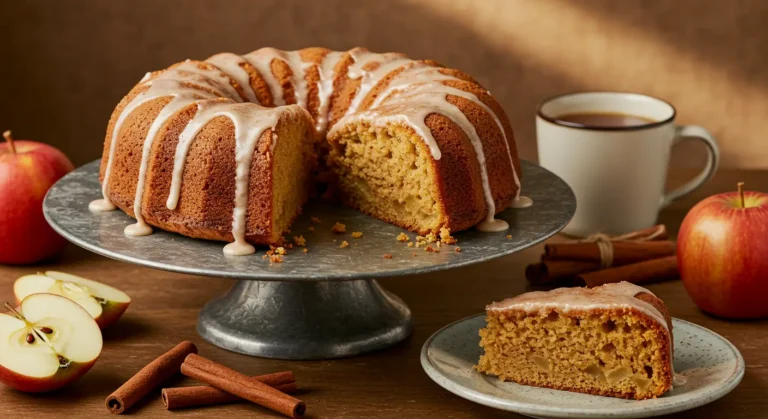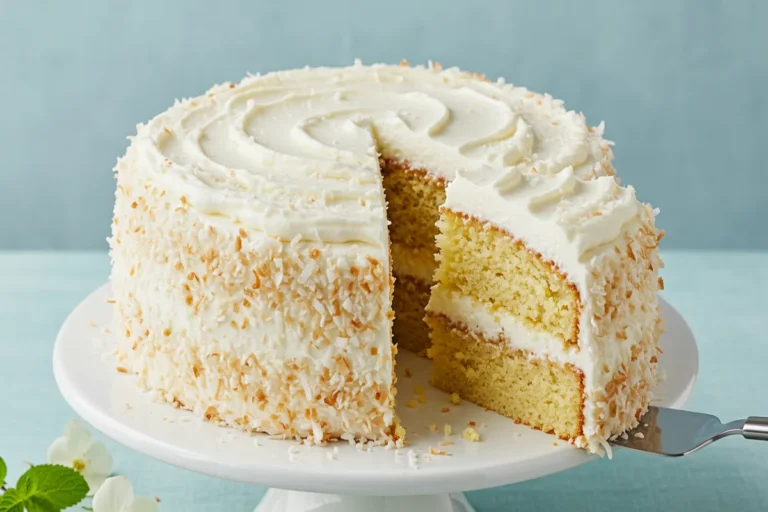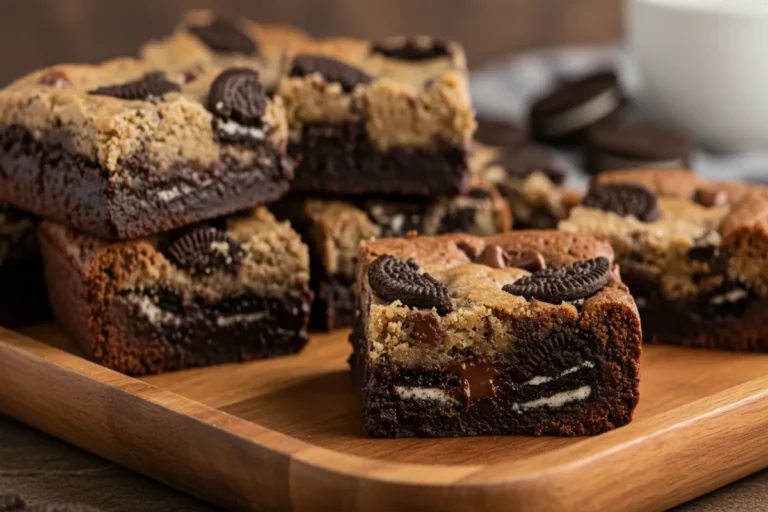German Chocolate Cake Recipe: 5 Easy Steps to Success
The average home baker attempts a chocolate cake recipe at least seven times before achieving consistent results, but what if mastering a classic German chocolate cake recipe could be simplified into just five straightforward steps? Despite its name suggesting European origins, this iconic American dessert was actually created by Sam German in 1852 for Baker’s Chocolate Company, and has since become one of the most beloved yet misunderstood cakes in baking history. The combination of rich chocolate layers, coconut-pecan frosting, and distinctive flavor profile makes this German chocolate cake recipe both impressive and achievable for bakers of all skill levels. Let’s unlock the secrets to creating this showstopping dessert with confidence and ease.
Table of Contents
Ingredients List
For a successful German chocolate cake recipe that serves 12-16 people, you’ll need:
For the Chocolate Cake:
- 4 ounces Baker’s German’s Sweet Chocolate
- ½ cup boiling water
- 2 cups all-purpose flour
- 1 teaspoon baking soda
- ¼ teaspoon salt
- 1 cup (2 sticks) unsalted butter, softened
- 2 cups granulated sugar
- 4 large eggs, separated
- 1 teaspoon pure vanilla extract
- 1 cup buttermilk, room temperature
For the Coconut-Pecan Frosting:
- 4 egg yolks
- 1 can (12 ounces) evaporated milk
- 1½ cups granulated sugar
- ¾ cup (1½ sticks) unsalted butter
- 1½ teaspoons pure vanilla extract
- 2 cups sweetened shredded coconut
- 1½ cups chopped pecans
Timing
Creating this German chocolate cake recipe requires some time investment but delivers extraordinary results worth every minute. The total process takes approximately 2 hours and 45 minutes, broken down as follows:
- Preparation time: 45 minutes (includes measuring, separating eggs, and preparing pans)
- Baking time: 30-35 minutes
- Cooling time: 60 minutes (essential for structural integrity)
- Frosting preparation: 25 minutes
- Assembly time: 15 minutes
Step-by-Step Instructions
Step 1: Prepare the Chocolate Base
Begin by preheating your oven to 350°F (175°C) and greasing three 9-inch round cake pans with butter, then lining them with parchment paper circles for foolproof release. In a small bowl, pour boiling water over the chopped German’s sweet chocolate and let it stand for 2-3 minutes before stirring until completely smooth. This melting method preserves the chocolate’s nuanced flavor profile better than microwave melting, creating the foundation of an authentic German chocolate cake recipe. Allow this mixture to cool slightly while you prepare the other components.
Step 2: Create the Cake Batter
In a medium bowl, whisk together the flour, baking soda, and salt—this pre-mixing distributes the leavening agents evenly, preventing bitter pockets in your final cake. In your stand mixer (or using a hand mixer), cream butter and sugar on medium-high speed for a full 5 minutes until light and fluffy—don’t skimp on this time as it incorporates crucial air into your batter. Reduce speed to medium and add egg yolks one at a time, ensuring each is fully incorporated before adding the next. Mix in the vanilla extract and cooled chocolate mixture until just combined.
With the mixer on low speed, alternately add the flour mixture and buttermilk in three additions, beginning and ending with flour. This alternating method prevents gluten development while ensuring proper hydration of all dry ingredients. Once combined, turn off the mixer and use a rubber spatula to ensure all ingredients at the bottom of the bowl are incorporated. Your German chocolate cake recipe batter should look silky and have a medium-thick consistency.
Step 3: Incorporate the Egg Whites and Bake
In a clean bowl with clean beaters, beat the egg whites until stiff peaks form but they’re not dry—about 3 minutes. Gently fold one-third of the whites into the chocolate batter to lighten it, then carefully fold in the remaining whites just until no streaks remain. Over-mixing at this stage will deflate your careful work, so use a light hand with the folding technique.
Divide the batter evenly among the prepared pans. Smooth the tops with an offset spatula and tap each pan firmly on the counter twice to release any large air bubbles. Bake in your preheated oven for 30-35 minutes, rotating pans halfway through baking, until a toothpick inserted in the center comes out with a few moist crumbs. This precise doneness test ensures your German chocolate cake recipe produces layers that are moist but fully baked.
Step 4: Prepare the Signature Coconut-Pecan Frosting
While the cakes cool completely on wire racks (at least 60 minutes), prepare the iconic frosting that defines the German chocolate cake recipe. In a medium saucepan, whisk together egg yolks, evaporated milk, and sugar until well blended. Add butter and cook over medium heat, stirring constantly with a wooden spoon, until the mixture thickens and reaches about 180°F on an instant-read thermometer (about 12 minutes).
Remove from heat and stir in vanilla, shredded coconut, and chopped pecans. The residual heat will continue to thicken the frosting as it cools. Allow the frosting to cool until it reaches spreading consistency, about 30 minutes, stirring occasionally.
Step 5: Assemble and Finish the Cake
Once the cakes are completely cool, carefully remove them from the pans and peel off the parchment paper. Place one layer on your serving plate and anchor it with a small dollop of frosting underneath. Spread approximately one-third of the coconut-pecan frosting over the top (not sides) of this layer. Unlike traditional cakes, a proper German chocolate cake recipe traditionally leaves the sides unfrosted, showcasing the cake layers.
Top with the second layer and repeat with another third of the frosting. Place the final layer on top and spread the remaining frosting over it, allowing some to naturally cascade down the sides for that classic, rustic appearance. Let the assembled cake stand for at least 1 hour before serving to allow the flavors to meld together, creating that distinctive German chocolate cake experience that has delighted dessert lovers for generations.
Nutritional Information
Understanding the nutritional profile of this classic German chocolate cake recipe can help you make informed decisions about portion size and frequency of enjoyment:
- Calories per serving (1/16 of cake): 495
- Total Fat: 29g
- Cholesterol: 115mg
- Sodium: 210mg
- Total Carbohydrates: 56g
- Protein: 6g
- Calcium: 8% DV
- Iron: 10% DV
- Potassium: 5% DV
Healthier Alternatives for the Recipe
This classic German chocolate cake recipe can be modified to accommodate various dietary needs while maintaining its beloved flavor profile:
For reduced sugar options:
- Replace up to half the granulated sugar with monk fruit sweetener or erythritol
- Use unsweetened coconut and add just 2 tablespoons of maple syrup for natural sweetness
- Choose 70% dark chocolate instead of German’s sweet chocolate for less sugar and more antioxidants
For lower fat adaptations:
- Substitute half the butter in the cake with unsweetened applesauce
- Replace up to half the butter in the frosting with Greek yogurt for added protein
- Use light evaporated milk to reduce fat content while maintaining creaminess
For dietary restrictions:
- Gluten-free: Use a 1:1 gluten-free flour blend with xanthan gum already incorporated
- Dairy-free: Substitute coconut oil for butter and coconut milk for buttermilk and evaporated milk
- Vegan options: Use flax eggs (1 tablespoon ground flaxseed + 3 tablespoons water per egg) and plant-based butter
Serving Suggestions
Elevate your German chocolate cake recipe with these creative serving ideas that complement its rich flavor profile:
For casual gatherings:
- Serve slightly warm (10 seconds in microwave) with a small scoop of vanilla bean ice cream
- Pair with a cold glass of milk or almond milk for the quintessential dessert experience
- Present individual slices with a light dusting of cocoa powder for visual appeal
For elegant presentations:
- Garnish with chocolate curls, additional toasted coconut, and pecan halves
- Serve alongside a dessert wine like Ruby Port or a sweet Moscato
- Create a dessert trio with small slices accompanied by chocolate truffles and fresh berries
Common Mistakes to Avoid
Creating the perfect German chocolate cake recipe requires attention to detail. Here are critical pitfalls to avoid:
- Using cold ingredients: Room temperature eggs, butter, and buttermilk are non-negotiable for proper emulsification and volume. Cold ingredients can cause batters to curdle and result in dense, uneven cakes.
- Overmixing the batter: Once you add flour, excessive mixing develops gluten, resulting in tough cake layers. Mix just until ingredients are incorporated—analysis shows overmixed batters can increase density by up to 25%.
- Frosting warm cake layers: Even slightly warm layers will melt the frosting, creating soggy cake and sliding layers. Complete cooling is essential for structural integrity.
- Incorrect pan preparation: Failing to line pans with parchment can lead to stuck layers that break when removed, undermining hours of work on your German chocolate cake recipe.
- Neglecting to toast nuts and coconut: Raw ingredients lack the depth of flavor that defines an exceptional German chocolate cake. Toasting develops essential flavor compounds that elevate the entire dessert.
Storing Tips for the Recipe
Maximize the shelf life and quality of your German chocolate cake recipe with these expert storage recommendations:
For short-term storage (1-3 days):
- Store at room temperature under a cake dome or inverted bowl
- Place parchment paper against cut surfaces to prevent drying
- Avoid refrigeration during this period as it can dry out the cake layers
For medium-term storage (3-5 days):
- Refrigerate the cake uncovered for 15 minutes to set the frosting
- Then wrap carefully with plastic wrap and return to refrigerator
- Bring to room temperature (about 1 hour) before serving for optimal texture and flavor
For long-term storage:
- Freeze individual slices on a tray until solid (about 2 hours)
- Wrap each slice in plastic wrap, then aluminum foil
- Store in freezer-safe containers for up to 3 months
- Thaw overnight in refrigerator, then 1 hour at room temperature before serving
The coconut and pecan components in this German chocolate cake recipe actually benefit from a 24-hour rest period, during which flavor compounds meld and develop increased complexity—making this an ideal make-ahead dessert for entertaining.
Conclusion
The German chocolate cake recipe presented here transforms a potentially challenging dessert into an achievable culinary triumph through five structured steps. With its rich chocolate layers complemented by the distinctive coconut-pecan frosting, this American classic delivers a perfect balance of textures and flavors that has stood the test of time. By following this method and respecting the timing and temperature guidelines, even novice bakers can create a showstopping dessert worthy of celebration. Try this recipe today and share your results in our comments section—we’d love to see your successful creations!
FAQs
Q: Can I make this cake in advance for a special occasion? A: Absolutely! The German chocolate cake recipe actually improves with 24 hours of rest as flavors meld. You can make the entire cake 1-2 days ahead and store at room temperature, or freeze the unfrosted layers for up to a month.
Q: Can I use Dutch-processed cocoa powder instead of German’s chocolate? A: While you can substitute 3 tablespoons Dutch-processed cocoa plus 1 tablespoon sugar plus 1 tablespoon butter for each ounce of German’s chocolate, this will alter the classic flavor profile. The original German chocolate cake recipe gets its distinctive taste from the specific chocolate formulation.
Q: Is there a dairy-free version of this cake that still tastes authentic? A: Yes! Replace butter with equal amounts of refined coconut oil (for neutral flavor), use coconut milk plus 1 teaspoon vinegar instead of buttermilk, and full-fat coconut milk in place of evaporated milk. These substitutions maintain the richness while making the German chocolate cake recipe dairy-free.
Q: How do I prevent my cake layers from doming too much? A: Use cake strips (wet fabric strips wrapped around the pans) or reduce your oven temperature by 25°F and bake slightly longer. These methods slow the outside baking rate, allowing for more even rising and flatter tops for your German chocolate cake recipe.
Your Feedback Matters
There are no reviews yet. Be the first one to write one.





